Everyone has been in a bad parking lot at some point — cramped and congested, with awkward angles and narrow space for pedestrians and vehicles alike — but not everyone is aware that good parking lot design can make a huge difference in the overall success of your business. This is especially true if you have a lot of vehicular traffic coming in and out, and doubly so if your business provides the parking.
What are the factors to consider in a parking lot layout?
The important principles of designing a parking lot are capacity, safety, and convenience. With those principles in mind, the first factors to consider are::
- Parking lot size and dimensions
- Parking space angles and capacity
- Flow of pedestrians and traffic
- Accessibility requirements
Additional elements to factor into your parking lot design for safety and convenience are trash can placement, lighting, and landscaping. Similarly to parking lot design, you should consider size, dimensions, use, location, convenience, and accessibility when selecting trash cans for parking lots to help keep them clean and tidy. We’ll help you design a good lot, and also outfit it with trash cans at strategic intervals.
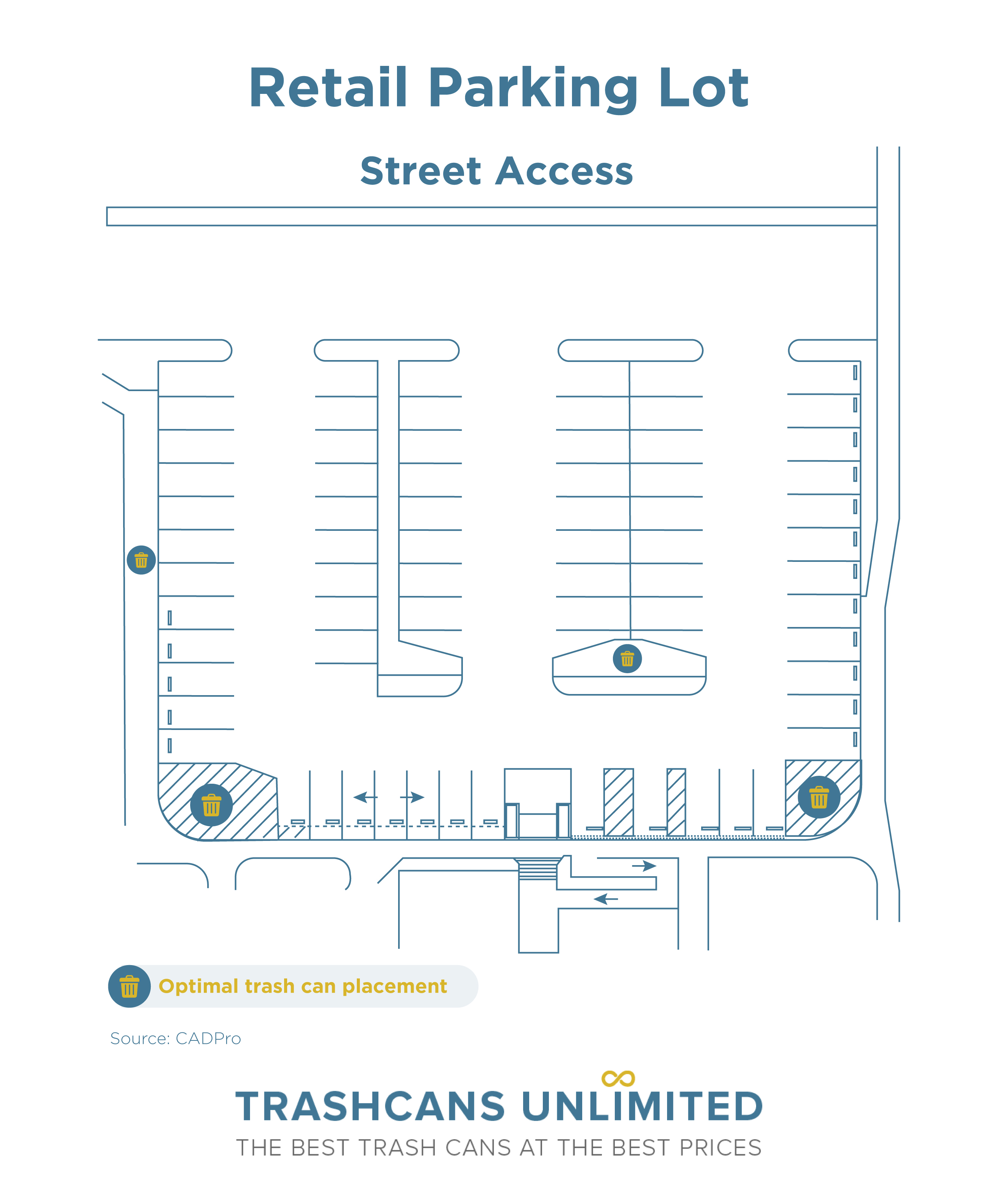
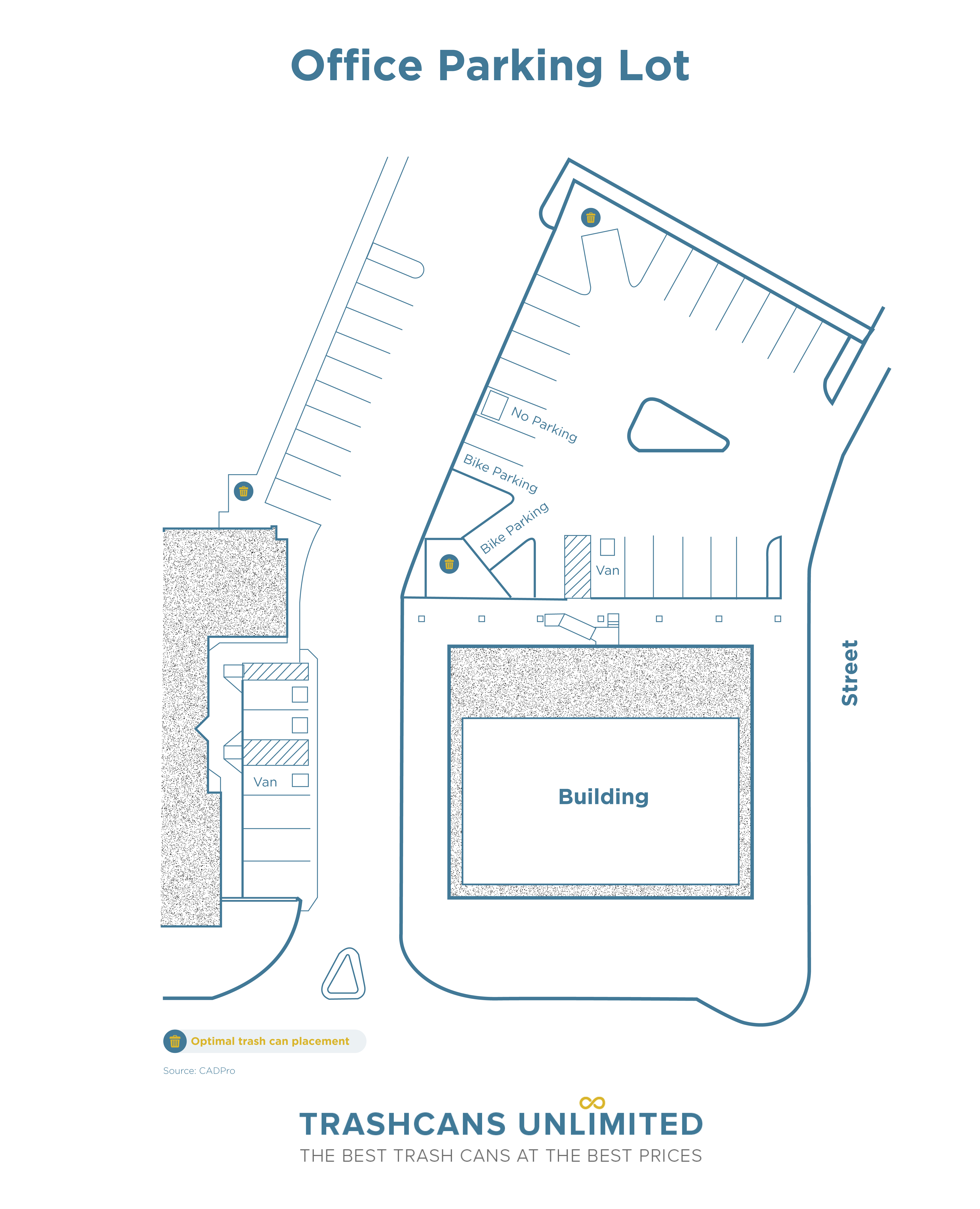
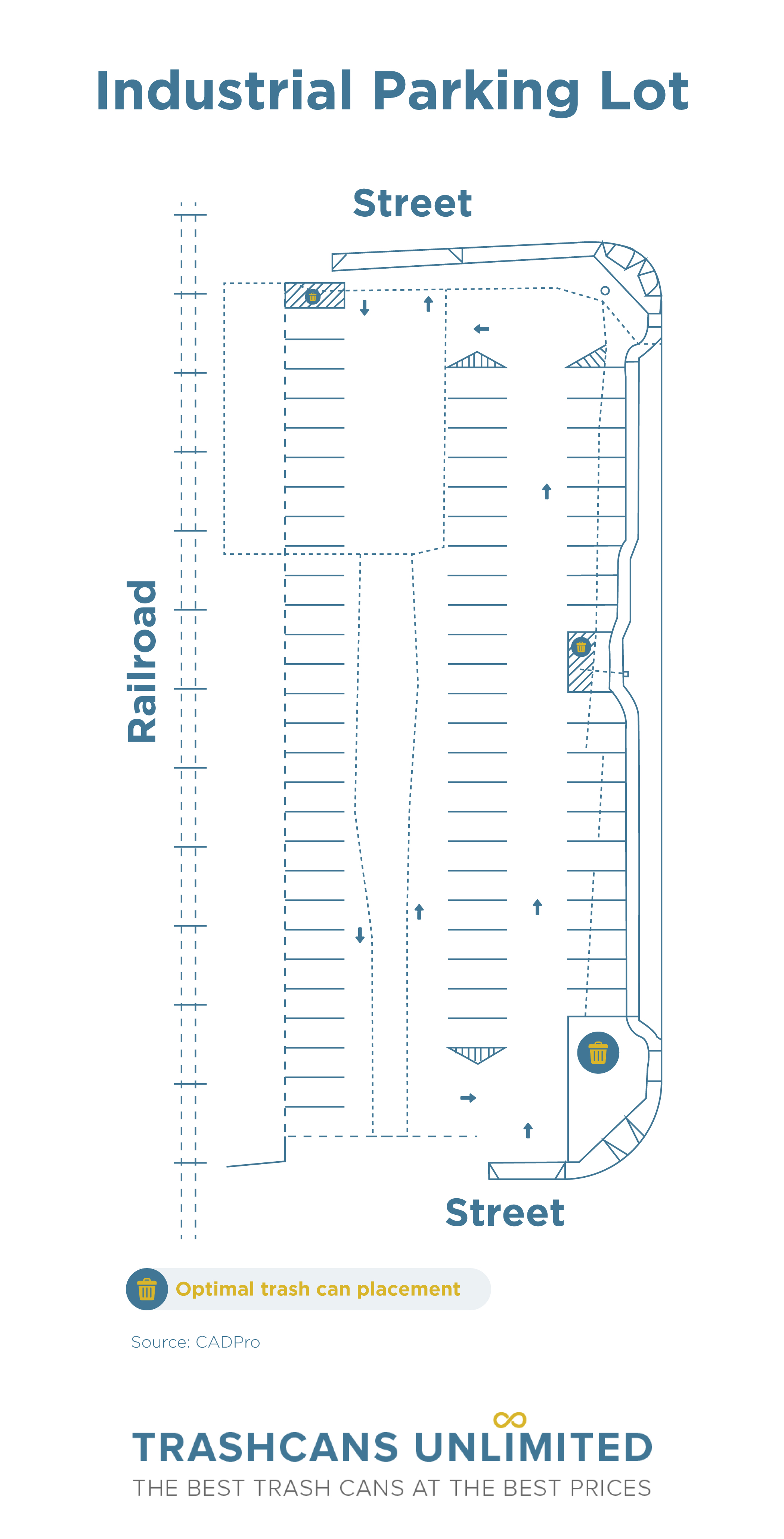
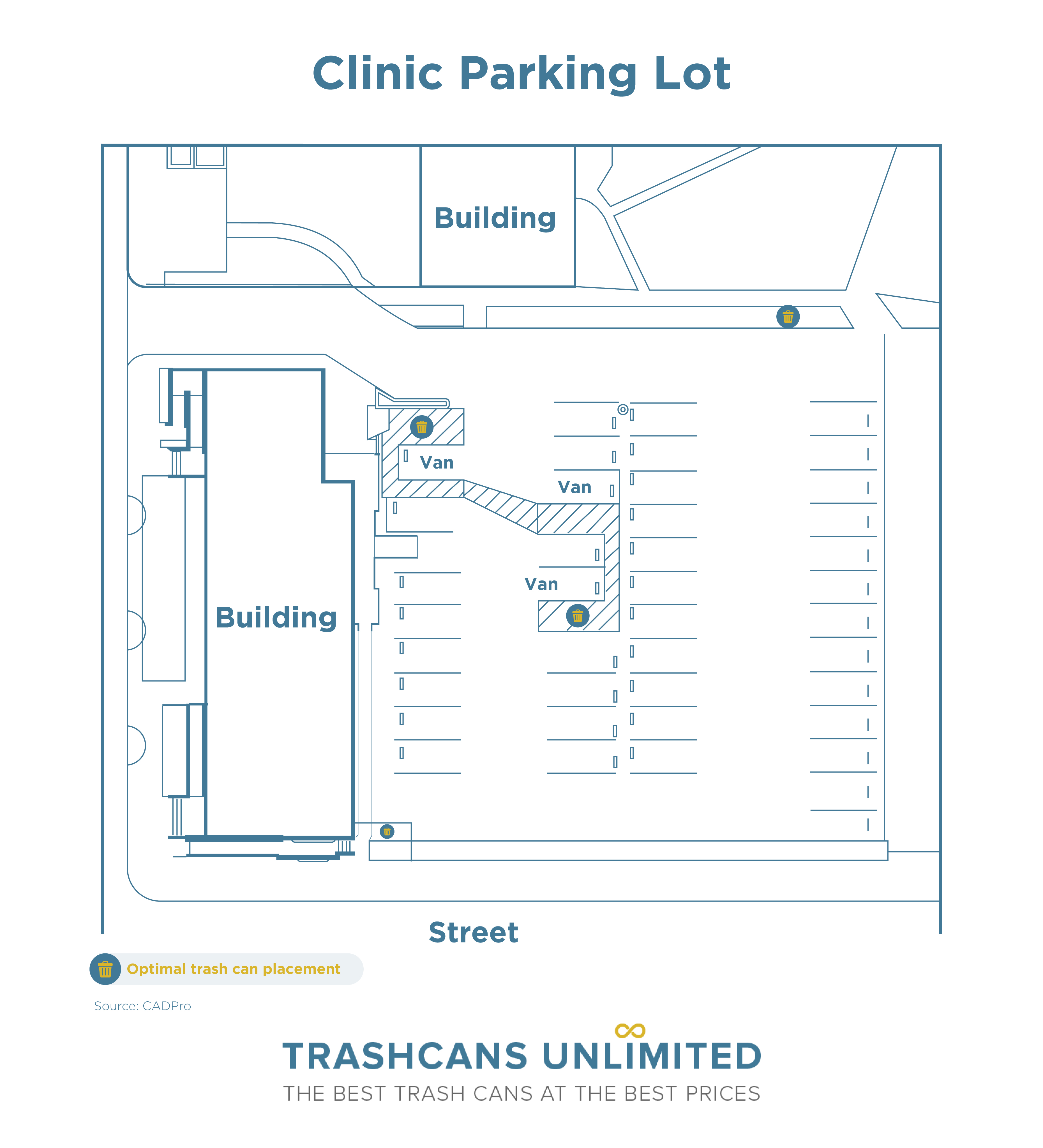
Different Types of Customers Require Different Parking Layouts
Depending on the lot you’re designing, you have to think about layout and purpose. Figuring out what types of vehicles will use your lot and what types of parking spaces they’ll need will go a long way toward a successful design. Busy retail and commercial parking lots will have different requirements than lots with low turnover or work vehicles. Retail businesses may need to accommodate customers as well as suppliers, who use parking facilities differently.
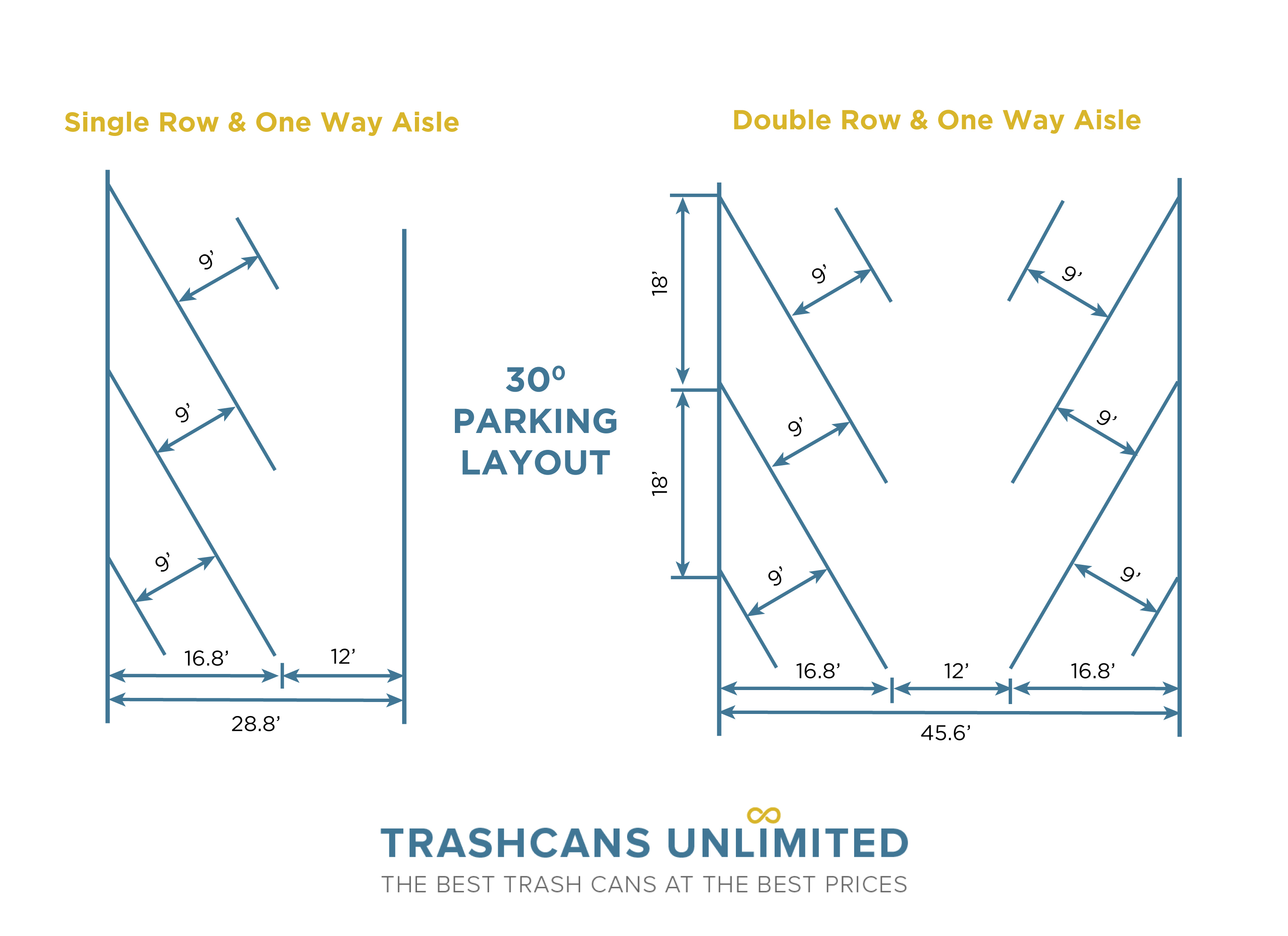
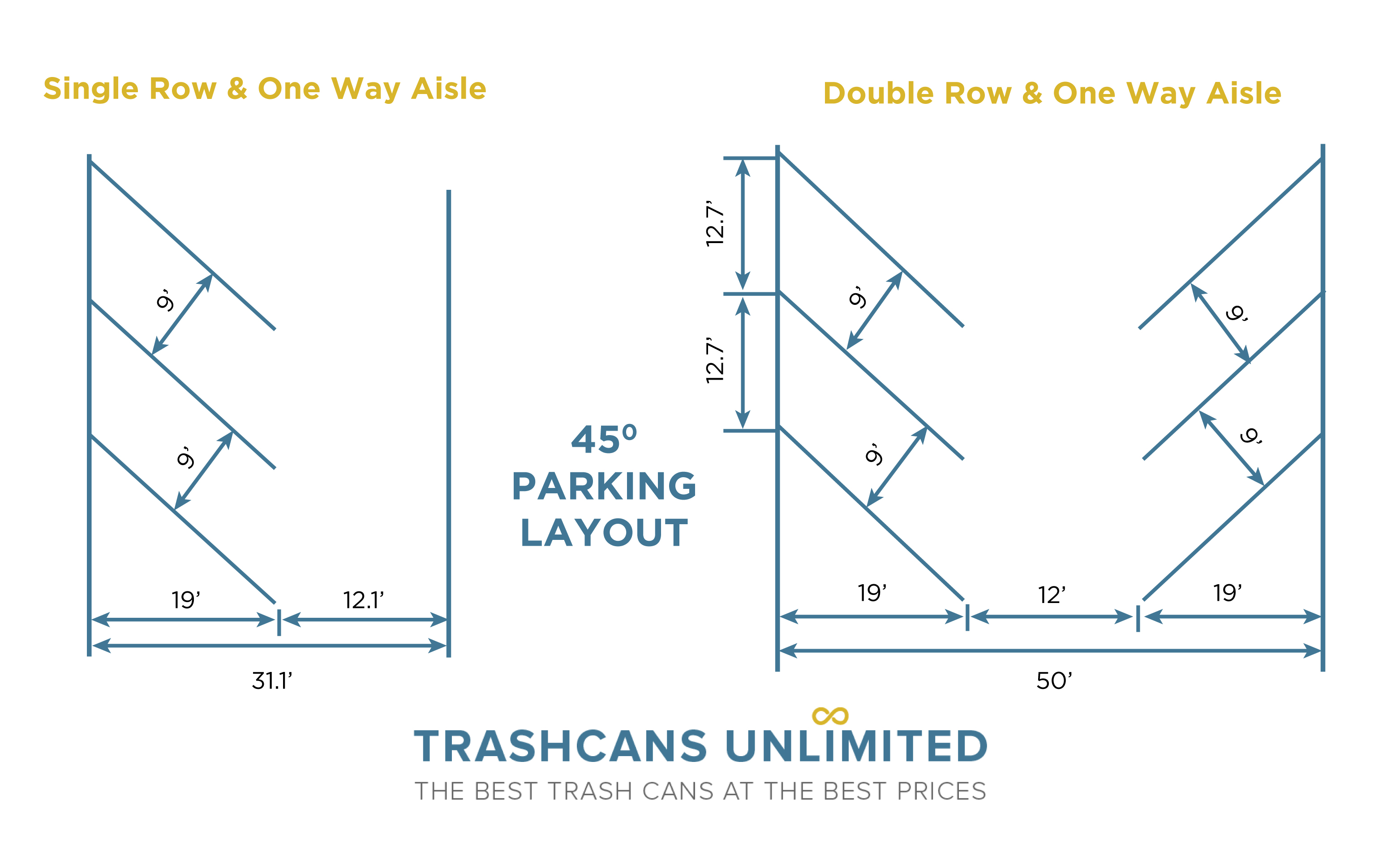
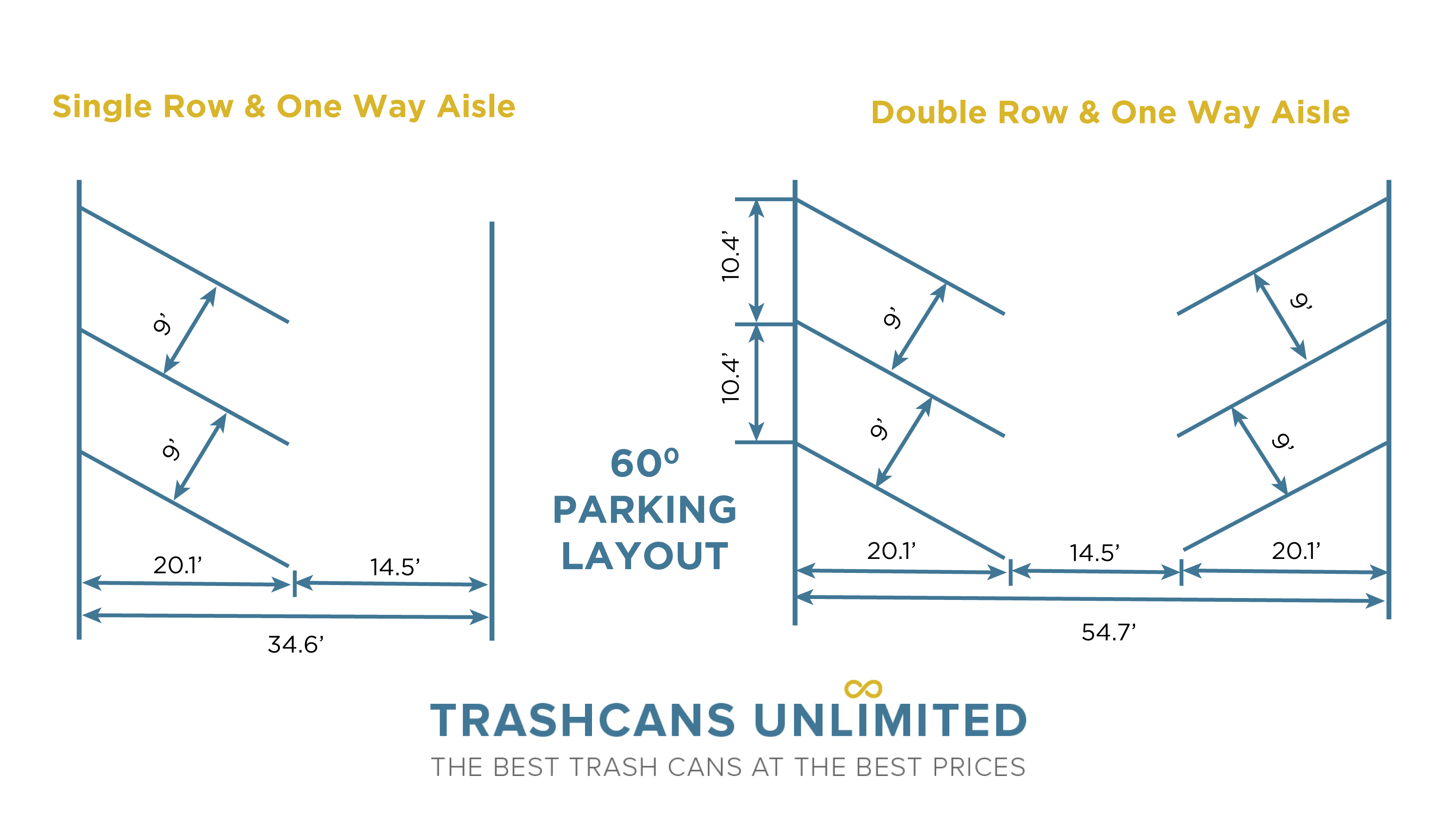
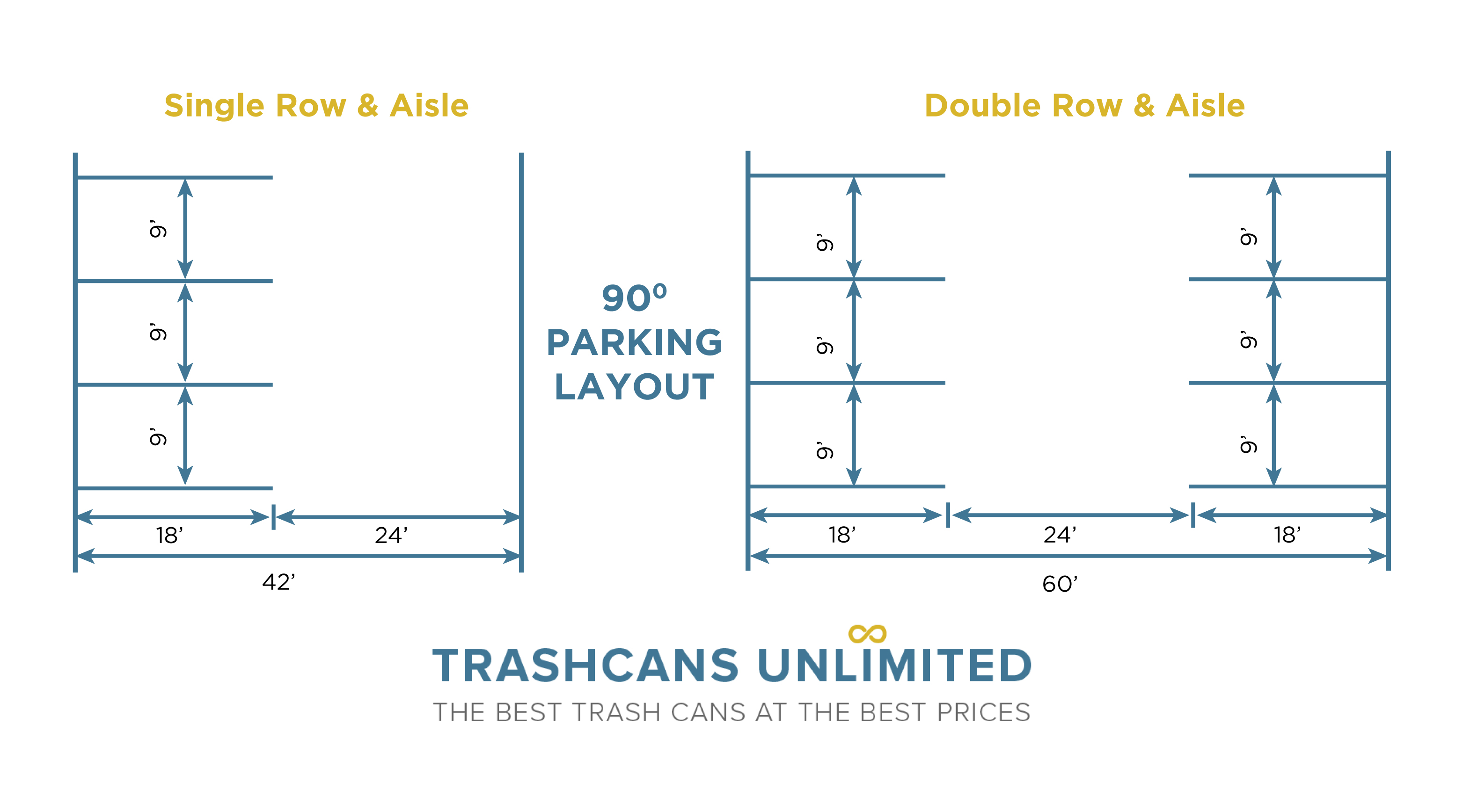
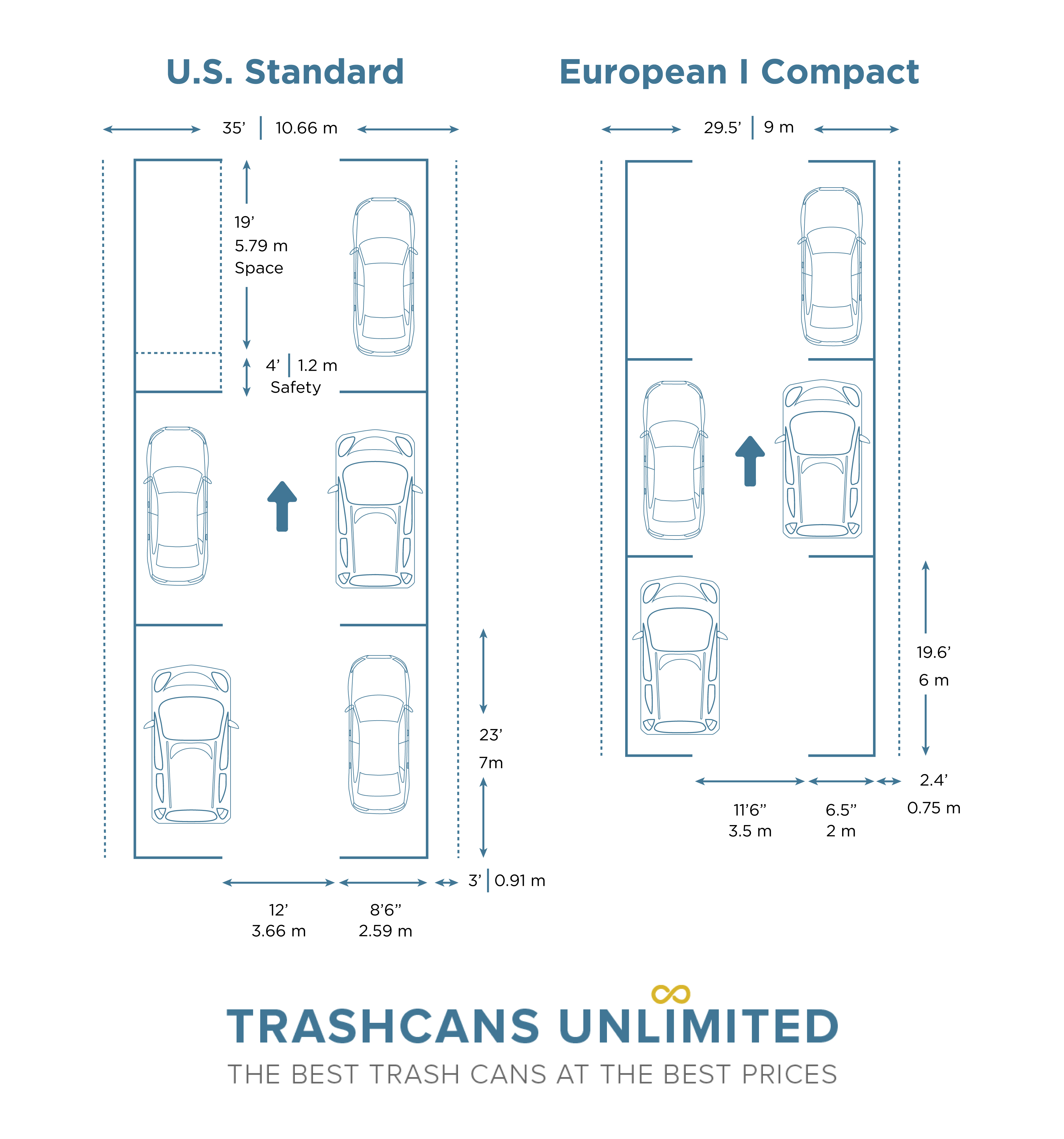
Parking Space Dimensions & Parking Lot Layout
How many spaces you can fit in your parking layout depends in part on the dimension of each space. Typically public parking spaces are 9’ x 18’ with tiny spaces as small as 7.25’ x 15.1’. Depending on the angles in which vehicles park, aisles for driving may be 11’ to 23’.
The size and dimensions will also determine the number and size of trash cans you need. The three main parking configurations are parallel, perpendicular (90 degree), or at an angle to the aisle (30, 45, or 60 degree).
- 30° Parking Spaces - Vehicles in this type of space park at 30° to the road alignment. This type of parking space offers better maneuverability and reduces delays. You can also pack in a significant amount of spaces this way.
- 45° Parking Spaces - Can accommodate more vehicles compared to parallel parking and 30° parking. It’s easily maneuverable as it does not require vehicles to make a sharp turn while parking.
- 60° Parking Spaces - Usually a middle ground between straight and 45° parking spaces. Its advantage is it takes up less space and enables cars to maneuver in and out with ease, with vehicles oriented at a 60 degree angle in the direction of the road.
- 90° Parking Spaces - Also known as perpendicular parking, this is usually the most space-saving form of parking, but it also creates greater opportunities for crashes and collisions.
- Parallel Parking Spaces - Works well in narrow, linear lots, which are also space-efficient. But many drivers find it difficult to maneuver into parallel spaces and can cause issues with traffic.
The primary consideration should be providing the maximum parking capacity and convenience with the best use of available space. How you layout your parking space configurations also has an impact on the efficiency of space use and how vehicles can best maneuver around your lot.
Basic best practices are to:
- Use rectangular areas. Rectangles typically offer the most bang for your buck in terms of maneuverability and efficient use of overall space.
- Make the aisles and rows parallel to the long dimension of the lot.This ensures that you can create uniform parking areas, reducing the possibility of congestion and confusion.
- Use parking stalls. Parking stalls keep people from parking too far forward, and also help with uniformity and the reduction of accidents
- Use traffic lanes. Traffic lanes that allow parkers to maneuver around each other take up additional space, but they make things more efficient, so there’s far less congestion.
- High turnover parking lots typically have spaces at 45 to 60-degree angles.
- It’s more difficult to park in a space at a 90-degree angle, so those are usually reserved for full-day or overnight parking.
- If you align rows of parking spaces perpendicularly to the facility, you’ll minimize the number of pedestrian aisle crossings, increasing overall safety.
- Try to keep parking spaces within 250 feet of a facility entrance. Proximity is especially key for customer or visitor parking.
- Eliminate dead-end parking areas, so there’s always a flow-through of traffic along aisles.
Tips to Configure Your Parking Layout Design for Pedestrian Safety & Convenience
Designing your parking lot around foot traffic is important for safety and customer convenience. While thinking about where people will naturally need to walk through and around your parking lot, keep these principles in mind:
- Keep the number of aisles pedestrians must cross to a minimum.
- Place multiple trash cans where they are visible and convenient but not intrusive.
- Provide plenty of access points and crosswalks from parking areas to facility entries.
- Separate pedestrian walkways from parking aisles whenever possible.
- Know the accessibility requirements for your parking lot and what those mean for layout. Consult your latest building codes, state, and federal laws for information on the required number, size, and location of handicapped parking spaces.
- Accessible parking spaces should be located as close to the facility entrance as possible. Where there is more than one access point (for example, when your parking lot serves multiple buildings), accessible parking spots should be made available close to each entrance.
Questions to Ask Yourself
What type of traffic will be using the lot?
This is the first and most important question. If you’re not going to have regular car traffic, don’t make regular car-sized spaces. Think about things like unloading and loading zones, bus lanes, etc.
What configuration will work best?
This is related to the previous question. If you’ve got metered or toll parking, for instance, maximizing available space creates additional income opportunities, though it comes at a higher risk for accidents. Understanding what your goals are for traffic helps you decide which is the best configuration.
What are your constraints?
Knowing what constraints you’re working with is important. Whether you need to store a dumpster in your parking lot or need room for a valet station, being conservative with your planning will get you better results down the road. If there’s metering or gating, make sure you have the room for that as well.
How do you design parking lots for buses and trucks?
Space efficiency (size and angle) is a primary concern for the design of parking lots for buses and trucks. Pavement thickness should be a focus when considering possible heavy loads from these vehicles. In an average parking lot, these heavier kinds of vehicles are typically designated to specific areas and will follow specific routes around the lot.
Trash Cans for Any Parking Lot
If the design of the lot is too small and congested and it’s hard for visitors to maneuver, that creates more potential for accidents, injuries, and property damages. Too big and you’re wasting valuable space. The same can be said for trash cans. Equipping your parking lot with the right number, size, and kind of trash cans and regularly maintaining them is essential to your property’s cleanliness and your business’s reputation.
Trashcans Unlimited provides the best trash cans at the best prices that will keep your parking lot clean and your customers happy. Whether you need concrete, commercial-grade, or cans with a custom logo, we’ve got you covered. Start browsing our products today.

